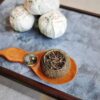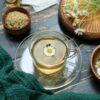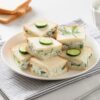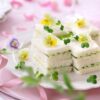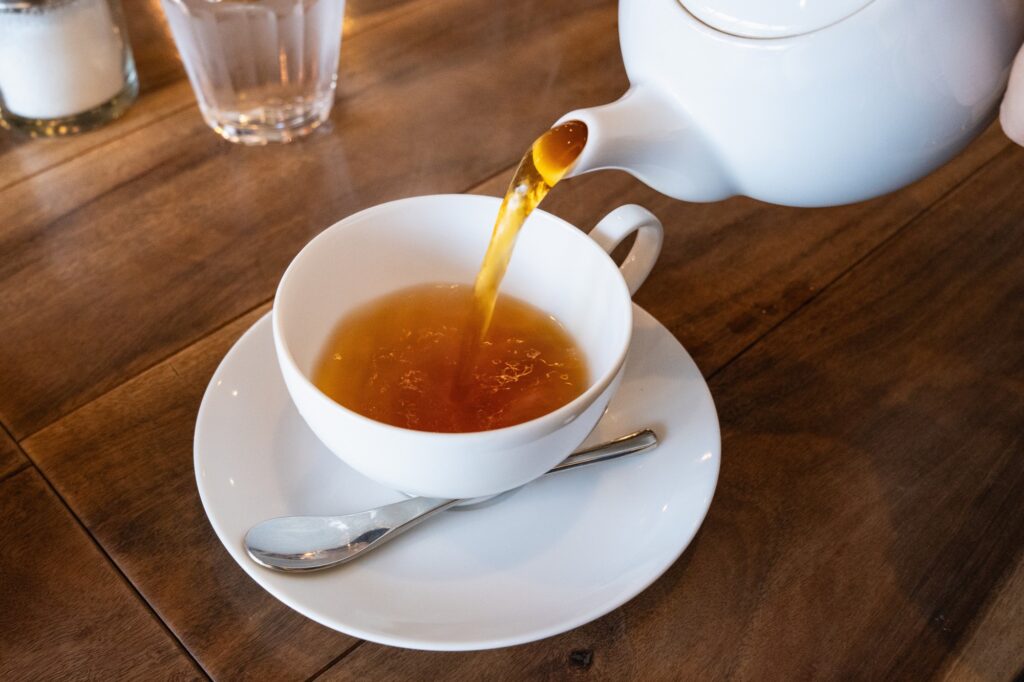
Step into the enchanting world of Earl Grey tea and discover the fascinating history, unique flavor, and impressive health benefits of this iconic beverage. With a legacy dating back to the 19th century, Earl Grey tea has captivated tea enthusiasts around the globe.
Delve into the origin story of Earl Grey tea, which is rumored to have been a serendipitous discovery when a British Prime Minister was gifted a blend of Chinese black tea scented with bergamot oil. This infusion of citrusy bergamot brings a delightful twist to traditional black tea, creating an aroma that is both invigorating and soothing.
Not only does Earl Grey tea delight the senses, but it also offers a range of health benefits. Rich in antioxidants, this tea can help boost immunity, improve digestion, and promote heart health. Additionally, the bergamot oil present in Earl Grey tea has been associated with mood enhancement and stress relief.
Ready to embark on a captivating journey through the world of Earl Grey tea? Join us as we delve into the history, flavor profile, and health benefits of this beloved tea blend.
The History of Earl Grey Tea
The origin story of Earl Grey tea is steeped in intrigue and legend. It is rumored to have been a serendipitous discovery when a British Prime Minister was gifted a blend of Chinese black tea scented with bergamot oil. This infusion of citrusy bergamot brings a delightful twist to traditional black tea, creating an aroma that is both invigorating and soothing.
Earl Grey tea derives its name from Charles Grey, the 2nd Earl Grey and the Prime Minister of the United Kingdom from 1830 to 1834. The story goes that a Chinese mandarin presented Lord Grey with this unique blend as a gesture of gratitude for saving his son’s life. Lord Grey was so enamored with the flavor that he requested the tea be recreated and named after him. Whether this tale is true or not, Earl Grey tea quickly gained popularity in England and eventually spread throughout the world.
The bergamot oil used to flavor Earl Grey tea is extracted from the peel of the bergamot orange, a citrus fruit primarily grown in Southern Italy. The oil is known for its fragrant and uplifting aroma, which pairs beautifully with the rich and robust flavors of black tea. Today, Earl Grey tea is a staple in tea shops and households worldwide, loved for its distinctive taste and historical significance.
The Distinctive Flavor Profile of Earl Grey Tea
One of the defining characteristics of Earl Grey tea is its unique flavor profile. The combination of black tea and bergamot oil creates a harmonious balance between the boldness of the tea and the bright, citrusy notes of the bergamot. The result is a tea that is simultaneously robust and refreshing.
The base of Earl Grey tea is typically a blend of high-quality black teas, such as Assam or Ceylon. These teas provide a strong and malty foundation that forms the backbone of the flavor profile. The bergamot oil, when added to the tea leaves, imparts a citrusy and floral aroma that complements the natural bitterness of black tea.
The bergamot oil used in Earl Grey tea is extracted from the peel of the bergamot orange. The oil contains compounds called terpenes, which are responsible for the distinct citrusy aroma and flavor. These terpenes add a layer of complexity to the tea, enhancing its overall taste and making it a favorite among tea connoisseurs.
Earl Grey tea can be enjoyed both hot and iced, and it pairs well with a variety of accompaniments. Some people prefer to add a splash of milk or a sweetener like honey or sugar to balance out the bitterness of the tea. Others enjoy it plain, savoring the interplay between the tea and bergamot flavors. However you choose to drink it, Earl Grey tea offers a sensory experience that is both comforting and invigorating.
Health Benefits of Drinking Earl Grey Tea
Not only does Earl Grey tea delight the senses, but it also offers a range of health benefits. Rich in antioxidants, this tea can help boost immunity, improve digestion, and promote heart health. Additionally, the bergamot oil present in Earl Grey tea has been associated with mood enhancement and stress relief.
The antioxidants found in Earl Grey tea are primarily derived from the black tea leaves. These antioxidants, known as polyphenols, help protect the body against free radicals, which are unstable molecules that can cause damage to cells and contribute to various diseases. By consuming Earl Grey tea regularly, you can support your body’s natural defense mechanisms and potentially reduce the risk of chronic illnesses.
The bergamot oil in Earl Grey tea contains compounds that have been studied for their potential health benefits. Some studies suggest that bergamot oil may help lower cholesterol levels, reduce inflammation, and improve blood sugar control. These findings are promising, but more research is needed to fully understand the extent of bergamot’s therapeutic properties.
In addition to its antioxidant and potential health benefits, Earl Grey tea can also be a soothing and comforting drink. The aroma of bergamot has been associated with relaxation and stress relief, making Earl Grey tea an ideal choice for those looking to unwind after a long day. Whether enjoyed in the morning to kickstart the day or in the evening as a calming ritual, Earl Grey tea offers a moment of tranquility in a busy world.
How to Brew the Perfect Cup of Earl Grey Tea
Brewing the perfect cup of Earl Grey tea is a delicate art that requires attention to detail and a few key steps. Follow these guidelines to ensure a flavorful and enjoyable tea-drinking experience.
- Start with high-quality loose leaf Earl Grey tea. Loose leaf tea allows the flavors to fully develop and provides a more nuanced taste compared to tea bags.
- Measure out the desired amount of tea. As a general rule, use one teaspoon of tea leaves for every 8 ounces of water.
- Heat water to the appropriate temperature. For black tea, the water should be just below boiling, around 200 to 212 degrees Fahrenheit (93 to 100 degrees Celsius).
- Preheat your teapot or mug by rinsing it with hot water. This helps to maintain the temperature of the tea during brewing.
- Add the tea leaves to the teapot or infuser, and pour the hot water over them. Allow the tea to steep for 3 to 5 minutes, or until it reaches your desired strength.
- Once the tea has steeped, remove the tea leaves or strain the tea to prevent over-extraction and bitterness.
- Enjoy your cup of Earl Grey tea as is or with a splash of milk, a wedge of lemon, or a sweetener of your choice. Savor the flavors and take a moment to appreciate the rich history and craftsmanship behind each sip.
Earl Grey Tea Variations and Blends
While the classic Earl Grey tea is made with black tea and bergamot oil, there are many variations and blends available to suit different tastes and preferences.
- Lady Grey: This variation of Earl Grey tea is named after the wife of Charles Grey, the 2nd Earl Grey. Lady Grey tea is usually a blend of black tea, bergamot oil, and additional flavors like lemon or orange peel. It offers a lighter and fruitier twist on the traditional Earl Grey tea.
- Green Earl Grey: For those who prefer the milder taste of green tea, Green Earl Grey is an excellent choice. It combines the grassy and vegetal flavors of green tea with the citrusy notes of bergamot, resulting in a refreshing and aromatic brew.
- Decaffeinated Earl Grey: If you love the taste of Earl Grey tea but want to avoid the caffeine, there are decaffeinated versions available. These teas go through a process to remove most of the caffeine while retaining the flavor and aroma.
- Earl Grey with Lavender: Lavender is a popular addition to Earl Grey tea, as it complements the floral notes of the bergamot. This blend offers a soothing and aromatic experience, perfect for relaxation and winding down.
- Earl Grey Cream: Earl Grey Cream is a luxurious blend that combines the traditional flavors of Earl Grey tea with the smoothness of vanilla. The addition of vanilla creates a creamy and indulgent cup of tea, perfect for those with a sweet tooth.
Earl Grey Tea in Popular Culture and Literature
Earl Grey tea has made appearances in various forms of popular culture, from literature to film and even music.
- Literature: In Jane Austen’s novel “Pride and Prejudice,” the character of Mr. Darcy is known to be a fan of Earl Grey tea. The mention of this tea adds an element of sophistication and refinement to the character. Earl Grey tea has also been featured in other literary works, including Agatha Christie’s mystery novels and the Harry Potter series by J.K. Rowling.
- Film and Television: Earl Grey tea has become synonymous with elegance and sophistication in film and television. It is often depicted as the tea of choice for aristocratic characters or those with refined taste. One notable example is Captain Jean-Luc Picard from “Star Trek: The Next Generation,” who famously orders “Tea. Earl Grey. Hot.” from the ship’s replicator.
- Music: Earl Grey tea has even inspired musicians. British singer-songwriter Sting mentions Earl Grey tea in his song “Tea in the Sahara,” adding a touch of whimsy and imagery to the lyrics. The mention of Earl Grey tea in songs and music videos reflects its cultural significance and the associations it carries with sophistication and elegance.
Where to Buy High-Quality Earl Grey Tea
When it comes to purchasing Earl Grey tea, it is essential to choose a reputable source that offers high-quality teas. Here are a few options to consider:
- Specialty Tea Shops: Specialty tea shops often carry a wide selection of Earl Grey teas, ranging from classic blends to unique variations. These shops are staffed by tea experts who can guide you in choosing the perfect tea based on your preferences.
- Online Tea Retailers: Many online retailers specialize in selling premium teasfrom around the world, including Earl Grey tea. These retailers often provide detailed descriptions of each tea, allowing you to make an informed decision before purchasing. Additionally, online shopping offers convenience, as you can browse and order teas from the comfort of your own home.
- Local Farmers Markets: Farmers markets are a great place to find locally sourced and artisanal teas, including Earl Grey. Supporting local tea producers not only ensures freshness but also contributes to the local economy.
- Tea Subscription Services: If you’re a tea enthusiast looking to explore a variety of Earl Grey teas, consider subscribing to a tea subscription service. These services deliver a curated selection of teas to your doorstep on a regular basis, providing an opportunity to discover new and exciting blends.
When purchasing Earl Grey tea, it’s important to check the quality of the tea leaves and the source of the bergamot oil. Look for teas that use high-quality black tea leaves and natural bergamot oil for the best flavor and aroma. Avoid teas that use artificial flavorings or low-quality ingredients.
Tips for Incorporating Earl Grey Tea into Recipes
Earl Grey tea isn’t just for drinking – it can also be a delightful addition to various recipes. Here are a few ways to incorporate Earl Grey tea into your culinary creations:
- Earl Grey Infused Baked Goods: Add a unique twist to your favorite baked goods by infusing Earl Grey tea into the recipe. Simply steep the tea in hot milk or cream and use it as an ingredient in cakes, cookies, or even ice cream. The floral and citrus notes of Earl Grey tea can elevate the flavors of your baked treats.
- Earl Grey Tea Latte: Put a twist on your regular latte by adding Earl Grey tea. Steep a strong cup of Earl Grey tea, then froth milk and combine the two. Add a touch of sweetener if desired, and enjoy a comforting and fragrant Earl Grey tea latte.
- Earl Grey Salad Dressing: Create a unique and flavorful salad dressing by infusing Earl Grey tea into olive oil. Simply warm the oil and steep a few teaspoons of Earl Grey tea in it. Strain the tea leaves and use the infused oil as a base for your salad dressing. The delicate bergamot flavors will add a refreshing twist to your salads.
- Earl Grey Poached Fruit: Poaching fruit in Earl Grey tea can infuse them with delicate flavors and create a delicious dessert. Simply steep the tea, add sweetener if desired, and then simmer the fruit in the tea until tender. Serve the poached fruit with a dollop of whipped cream or ice cream for a delightful treat.
Remember to experiment and have fun when incorporating Earl Grey tea into your recipes. The versatile flavors of Earl Grey can add a unique touch to both sweet and savory dishes, allowing you to explore a whole new world of culinary possibilities.
Celebrating the Allure of Earl Grey Tea
Earl Grey tea has a rich history, a distinctive flavor profile, and a range of health benefits, making it a beloved tea blend around the world. From its serendipitous origin story to its association with elegance and sophistication, Earl Grey tea continues to captivate tea enthusiasts and tea novices alike.
Whether you enjoy it hot or iced, plain or with a splash of milk, Earl Grey tea offers a sensory experience that is both comforting and invigorating. Its unique combination of black tea and bergamot oil creates a harmonious balance of flavors, satisfying both tea purists and those seeking a touch of excitement.
Beyond its delicious taste, Earl Grey tea provides a range of health benefits. With its antioxidant properties and potential mood-enhancing effects, this tea is not only a delightful beverage but also a valuable addition to a healthy lifestyle.
So, next time you brew a cup of Earl Grey tea, take a moment to appreciate the craftsmanship and history behind each sip. Whether you’re savoring it on a quiet afternoon, sharing it with loved ones, or incorporating it into your favorite recipes, let the allure of Earl Grey tea transport you to an enchanting world of flavor and tradition.

